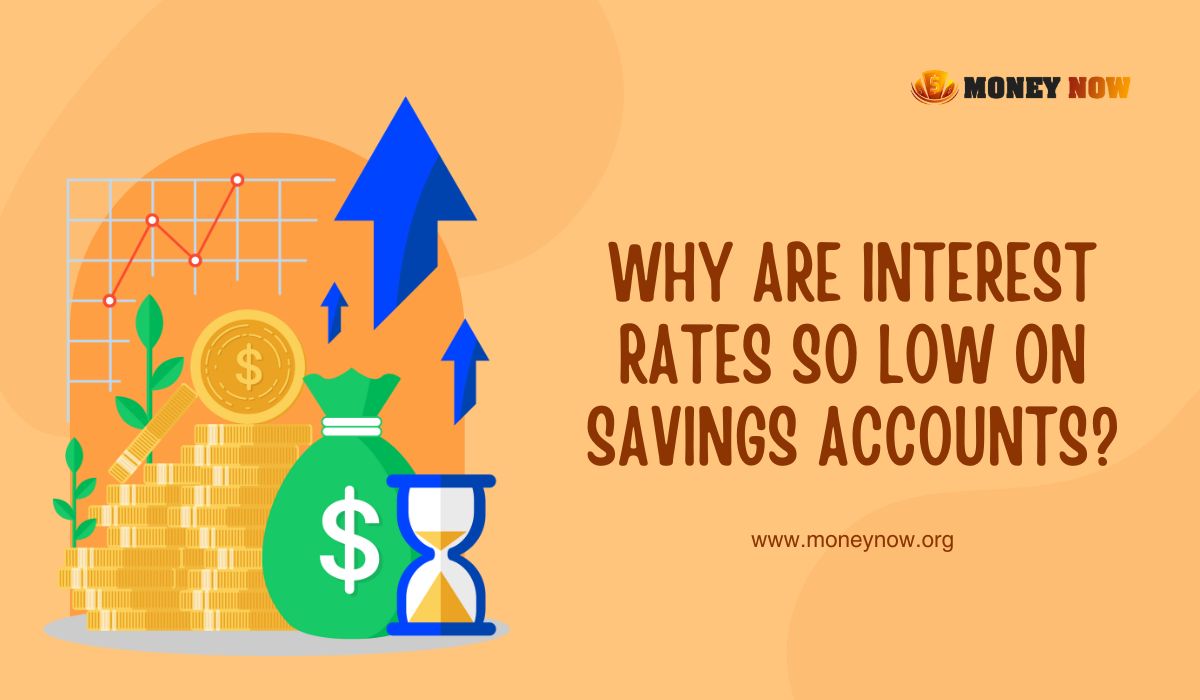
In today's financial climate, many savers are scratching their heads, wondering, "Why are interest rates so low on savings accounts?" This perplexing question has a multifaceted answer, rooted in the intricate dance of global economics, central bank policies, and the shifting sands of the banking industry itself. At the heart of this issue are the strategies deployed by central banks worldwide to target inflation, stimulate economic growth, and respond to crises, all of which directly impact the interest rates you see on your savings. Coupled with the global demand for safe assets and the evolving nature of banking technology, these factors create a perfect storm for low interest rates.
This article peels back the layers of this complex scenario to provide a clearer understanding of the current low-interest landscape and what it means for your savings strategy.
The primary driver behind the interest rates offered on savings accounts is the monetary policy enacted by central banks, such as the Federal Reserve in the United States, the European Central Bank in the Eurozone, or other national banks around the world. These institutions set the benchmark interest rates, influencing the cost of borrowing and the interest earned on savings throughout the economy.
Low Inflation Targeting: Central banks aim to maintain a stable inflation rate, often around 2%. In periods of low inflation or deflation, central banks lower interest rates to encourage borrowing and spending, which can help stimulate economic growth.
Economic Stimulus: In times of economic downturn or recession, central banks often reduce interest rates to near-zero levels as a measure to stimulate economic activity by making borrowing cheaper and encouraging investment and consumption.
The global economic landscape also plays a significant role in determining the interest rates on savings accounts.
Demand for Safe Assets: In uncertain economic times, there's a high demand for safe assets, including deposits. Banks, inundated with deposits, have less incentive to offer high interest rates to attract more savings.
Low Market Interest Rates: The broader market interest rates, including those on government bonds, influence the rates banks can offer. With low yields on these investments, banks adjust the interest on savings accounts accordingly.
The fundamental banking model—to borrow at lower rates and lend at higher ones—is squeezed in a low-interest-rate environment. This squeeze reduces the profit margin from lending activities, leading to lower interest rates offered on savings accounts. Additionally, post-financial crisis regulations have imposed higher capital requirements and operational costs on banks, further straining their profitability and influencing the interest rates they can afford to pay savers.
The banking sector's evolution, driven by technological innovation and the rise of fintech, has dramatically altered how we interact with our finances. Online banking platforms and fintech companies have introduced a level of convenience and efficiency previously unimaginable, allowing customers to manage their finances from anywhere at any time. This shift towards digital banking has significantly reduced the operational costs for banks, primarily by decreasing the need for physical branches and the associated expenses.
However, rather than passing these savings onto consumers in the form of higher interest rates on savings accounts, banks, and financial institutions have largely redirected their resources towards enhancing the customer experience and expanding their service offerings. Investments in technology have gone into developing more intuitive apps, securing transactions, and offering innovative services like instant peer-to-peer payments and financial management tools. While these advancements have undoubtedly benefited consumers in many ways, they have not translated into better yields on traditional savings.
The implications of persistently low interest rates extend beyond the mere act of saving; they fundamentally alter the landscape of personal finance for savers. Faced with the diminishing returns of traditional savings accounts, individuals are compelled to reassess their strategies for safeguarding and growing their financial assets. This shift has not only encouraged a broader exploration of the financial market but also necessitated a deeper understanding of risk and reward. Savers are now venturing into realms previously considered the domain of more seasoned investors, such as the stock market, bond market, and mutual funds, in search of more favorable returns.
This diversification, while potentially more lucrative, requires savers to become more financially literate, understanding the nuances of each investment type and the inherent risks involved. High-yield savings accounts offered by online banks emerge as a beacon for those still preferring the security of a savings account but seeking higher interest rates. This evolution towards more complex financial portfolios reflects a proactive approach to personal finance, spurred by the need to adapt to an economic environment that no longer rewards traditional saving as it once did.
Navigating the landscape of low interest rates requires a strategic and informed approach to personal finance. As traditional savings accounts no longer offer the returns they once did, savers must look beyond conventional methods to ensure their financial stability and growth. Here are several strategies to consider:
Don't put all your eggs in one basket. Diversification across different asset classes can reduce risk and increase potential returns. Consider a mix of stocks, bonds, real estate, and perhaps even commodities or cryptocurrency, depending on your risk tolerance and financial goals.
Online banks and credit unions often offer high-yield savings accounts with better interest rates than traditional brick-and-mortar banks. While these rates are still relatively low, they can provide a slightly better return on your savings with minimal risk.
CDs typically offer higher interest rates in exchange for locking in your money for a set period. If you have funds you won't need in the immediate future, CDs can be a safe way to earn a higher return than a standard savings account.
Peer-to-peer lending platforms allow individuals to lend money directly to borrowers, cutting out the traditional banking intermediary. This can offer higher returns than savings accounts, though it comes with higher risk.
Maximizing contributions to retirement accounts like 401(k)s and IRAs can offer tax advantages in addition to potential returns from the market. If your employer offers a match on your 401(k) contributions, make sure to contribute at least enough to get the full match, as it's essentially free money.
The financial landscape is constantly changing, and staying informed can help you make the best decisions for your situation. Regularly review your financial plan and be prepared to adjust your strategy as market conditions, interest rates, and your personal circumstances evolve.
If you're unsure about how to navigate the current financial environment, consider consulting with a financial advisor. A professional can offer personalized advice based on your individual goals and financial situation, helping you to develop a strategy that maximizes your returns while managing risk.
In conclusion, the question of "why are interest rates so low on savings accounts" can be answered through a lens that captures a wide array of economic dynamics, from central bank policies aimed at stimulating growth to the impact of technological advancements in banking. As savers face the reality of this low-interest era, the key to navigating these waters lies in diversification, seeking higher-yield opportunities, and staying informed and flexible with financial strategies. While the landscape has shifted, understanding these foundational reasons offers a pathway to adapt and thrive financially.
Discover the key differences between a Certificate of Deposit and a Savings Account to make informed decisions about your savings strategy. Dive into our detailed guide to understand which option best suits your financial goals and how to maximize your returns.
